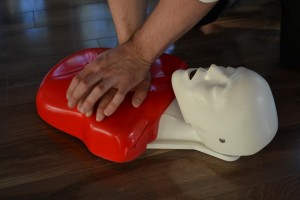One of the most petrifying things you may encounter at one point or the other is when your pet becomes unconscious, or for whatever reason, stops breathing so that you are required to carry out pet CPR. The first thought that comes to mind is, how exactly do you get to save your pet? While there are many reasons why pets get heart attacks, it is worth noting that at times, their hearts stop functioning following trauma to any part of their bodies. For a long time, there were no guidelines on how to effectively carry out pet CPR, but today research carried out in the vet department has made it possible for pet owners to be able to get information that is relevant as far as this is concerned. Carrying out this form of CPR has the potential to save your pet’s life, so it is important that every pet owner has this information. Below are the steps to be followed when administering CPR to your pet.
[youtube url=”https://www.youtube.com/watch?v=0AFrUiRIeVo” width=”220″]How to perform pet CPR?

1) Before embarking on any CPR techniques, the first thing that you must do is check whether the pet is responsive. Put your hand on the pet’s mouth to check whether there is any breathing, taking care not to cause blockage as this could further worsen the situation. Place your ear on the chest of the pet to see whether you can identify any heartbeat.
2) If you have done the above and the pet is still not responsive, the next thing that you must do is make sure that the airways of the pet are not blocked. This second step of pet CPR will require that you gently open the pet’s mouth and pull the tongue out. Failure to do so could cause the tongue to slump backwards and cause chocking. Be very cautious because even when unconscious, animals may bite as part of instinct behavior. See that there are no foreign objects in the mouth, and remove any that you find.
3) Take the next step of pet CPR and carry out rescue breathing. Close your pet’s mouth and then take a deep breath and exhale in the pet’s nose until you notice that the chest area rises. If this does not happen, correct the positioning of the airways and then carry out rescue breaths before proceeding to the next step.
4) Place the pet on its side and prepare to carry out chest compressions. Place the thumb and forefingers on the pet’s chest and squeeze together gently. This is done at about 100 compressions every minute. The chest compressions are done in intervals with the rescue breaths until a regular heartbeat is felt. Even if the pet does start breathing, you will still need to see a vet for further examination. This cannot be overlooked because there could be an underlying problem that requires to be solved urgently. Pet CPR certainly is a life-saving technique that pet owners ought to learn.
